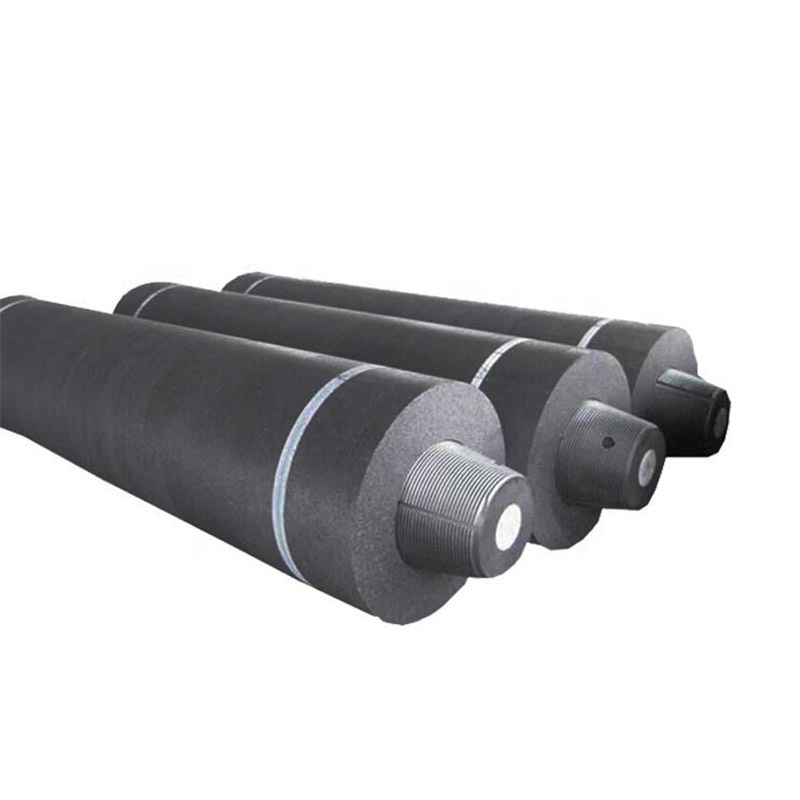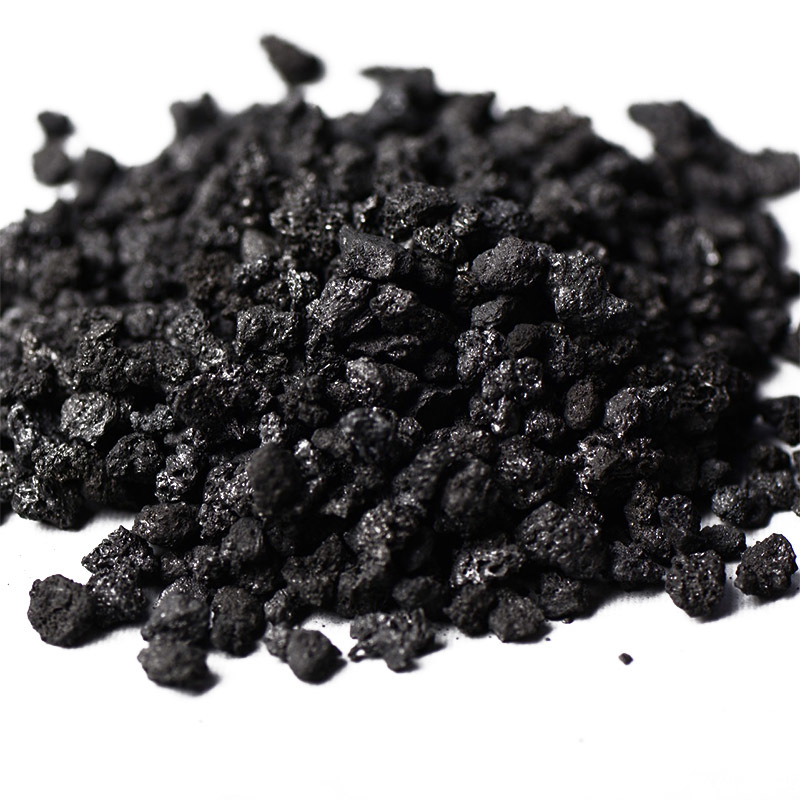Graphite Electrode: A Vital Element in Non-Metallic Mineral Solutions
Release Time:
Jun 04,2025
Graphite Electrode: A Key Component in Non-Metallic Mineral Solutions Graphite electrodes are becoming increasingly crucial in the non-metallic mineral sector, particularly in metallurgy and energy production. These components play a vital role in electric arc furnaces (EAFs), which are used for steel and other metal productions. Understanding the significance of graphite electrodes can enhance ou

Graphite Electrode: A Key Component in Non-Metallic Mineral Solutions
Graphite electrodes are becoming increasingly crucial in the non-metallic mineral sector, particularly in metallurgy and energy production. These components play a vital role in electric arc furnaces (EAFs), which are used for steel and other metal productions. Understanding the significance of graphite electrodes can enhance our grasp of their applications, benefits, and future potential in various industries. In this article, we will explore the intricacies of graphite electrodes, their production processes, applications, and their essential role in sustainability.
Table of Contents
- What Are Graphite Electrodes?
- The Manufacturing Process of Graphite Electrodes
- Applications of Graphite Electrodes
- Benefits of Using Graphite Electrodes
- Challenges in the Graphite Electrode Industry
- The Future of Graphite Electrodes
- Sustainability and Graphite Electrodes
- Frequently Asked Questions
What Are Graphite Electrodes?
Graphite electrodes are cylindrical structures made from graphite material, primarily used in EAFs for smelting metals. They conduct electricity and serve as a medium for the electric arc that melts scrap metal and other materials. The ability of graphite electrodes to withstand high temperatures and maintain electrical conductivity makes them indispensable in industries like steel manufacturing, aluminum production, and foundries.
Composition of Graphite Electrodes
The composition of graphite electrodes typically includes high-quality petroleum coke, which is carbonized and then graphitized to enhance conductivity and thermal resistance. The quality and purity of the raw materials directly impact the performance of the electrodes, making the selection process critical.
The Manufacturing Process of Graphite Electrodes
The production of graphite electrodes involves several key steps, each designed to maximize quality and performance. These processes are critical in determining the final properties of the electrodes.
Raw Material Selection
The first step in manufacturing graphite electrodes is selecting high-quality raw materials. Petroleum coke and needle coke are commonly used due to their high carbon content and low impurities. The selection of raw materials significantly affects the mechanical and thermal properties of the final product.
Calcination
After raw materials are chosen, they undergo a calcination process where they are heated to high temperatures in a controlled environment. This step removes volatile substances and enhances the carbon content, preparing the material for further processing.
Molding
Once calcined, the material is mixed with a binding agent and molded into the desired cylindrical shape. The molding process is crucial as it determines the density and structural integrity of the electrodes.
Baking
The molded electrodes are then baked at high temperatures in a baking furnace, which solidifies the binder and converts the material into a rigid carbon structure. This baking process significantly influences the electrical conductivity and thermal properties of the electrodes.
Graphitization
Following baking, the electrodes undergo graphitization in an electric furnace. This step involves heating the material to temperatures exceeding 3000 degrees Celsius, converting the carbon structure into graphite. Graphitization enhances the electrical conductivity, making the electrodes suitable for their intended applications.
Machining and Quality Control
After graphitization, the electrodes are machined to precise dimensions and undergo rigorous quality control tests. These tests ensure that the electrodes meet industry standards and specifications.
Applications of Graphite Electrodes
Graphite electrodes are utilized in various applications within the non-metallic mineral sector, primarily due to their ability to withstand high temperatures and conduct electricity effectively.
Steel Manufacturing
The most prominent application of graphite electrodes is in EAFs for steel manufacturing. The electric arc generated by the electrodes melts scrap metal, which can then be refined and poured into molds. This method is increasingly preferred due to its energy efficiency and lower emissions compared to traditional blast furnace methods.
Foundries
In foundries, graphite electrodes are used for melting non-ferrous metals, including aluminum and copper. Their ability to withstand extreme temperatures makes them ideal for this purpose, ensuring high-quality metal production.
Other Industrial Applications
Graphite electrodes also find applications in the production of silicon metal, ferroalloys, and other non-metallic minerals. Their versatility allows them to be adapted for various processes, contributing to improved efficiency and output in several industries.
Benefits of Using Graphite Electrodes
The advantages of using graphite electrodes in industrial applications are numerous, contributing significantly to their widespread adoption.
High Electrical Conductivity
Graphite electrodes exhibit exceptional electrical conductivity, which is essential for efficient metal melting processes. This property allows for reduced energy consumption and improved operational efficiency.
Thermal Resistance
Graphite can withstand high temperatures without degrading, making it an ideal material for use in electric arc furnaces. This thermal resistance ensures consistent performance during the melting process.
Cost-Effectiveness
Although the initial investment in graphite electrodes can be higher than alternative materials, their long lifespan and performance efficiency often lead to lower operational costs over time. They require less frequent replacement, resulting in reduced downtime and maintenance expenses.
Environmental Benefits
Using graphite electrodes in steel production is associated with lower carbon emissions compared to traditional methods. This makes their adoption beneficial for industries seeking to reduce their environmental footprint.
Challenges in the Graphite Electrode Industry
Despite their advantages, the graphite electrode industry faces several challenges that can impact production and supply.
Raw Material Scarcity
The availability of high-quality raw materials, such as petroleum coke and needle coke, is crucial for electrode production. Fluctuations in supply and prices can affect the overall cost and availability of graphite electrodes.
Market Demand Fluctuations
The demand for steel and other metals can be volatile, which directly affects the graphite electrode market. Economic downturns or changes in industry regulations can lead to reduced demand for these components.
Environmental Regulations
As environmental concerns grow, the graphite electrode industry must adapt to stricter regulations regarding emissions and waste management. Compliance with these regulations may require additional investments and innovations.
The Future of Graphite Electrodes
The future of graphite electrodes looks promising, driven by advancements in technology and increasing demand for sustainable practices.
Technological Innovations
Continuous research and development in the production of graphite electrodes are leading to innovations that enhance performance and reduce costs. For example, the development of synthetic graphite and alternative materials may provide solutions to some current challenges.
Sustainable Practices
As industries strive for sustainability, the demand for graphite electrodes produced through environmentally friendly processes is likely to increase. Companies that prioritize sustainable sourcing and production methods will gain a competitive edge.
Sustainability and Graphite Electrodes
Graphite electrodes play a vital role in promoting sustainability within the metallurgy sector. Their use in EAFs contributes to lower carbon emissions and energy consumption, aligning with global sustainability goals.
Recycling and Reusability
Many graphite electrodes can be recycled or reused, further enhancing their sustainability profile. Companies are increasingly focusing on developing recycling programs to reduce waste and promote a circular economy.
Green Technologies
Emerging green technologies, such as renewable energy sources and carbon capture methods, can further improve the sustainability of graphite electrode production and usage. Industries that embrace these technologies will lead the way in environmentally responsible practices.
Frequently Asked Questions
What is the primary use of graphite electrodes?
The primary use of graphite electrodes is in electric arc furnaces for the production of steel and other metals.
How are graphite electrodes produced?
Graphite electrodes are produced through a multi-step process involving raw material selection, calcination, molding, baking, graphitization, and machining.
What advantages do graphite electrodes offer over other materials?
Graphite electrodes are favored for their high electrical conductivity, thermal resistance, cost-effectiveness, and environmental benefits.
What challenges does the graphite electrode industry face?
The industry faces challenges related to raw material scarcity, market demand fluctuations, and compliance with environmental regulations.
How does the future look for graphite electrodes?
The future appears bright, with ongoing technological innovations and a shift towards sustainable practices driving demand and performance enhancements in graphite electrodes.
Conclusion
Graphite electrodes are undeniably a key component in non-metallic mineral solutions, particularly in the metallurgy sector. Their exceptional properties and versatile applications make them invaluable in modern industrial processes. As industries continue to prioritize sustainability and efficiency, the demand for high-quality graphite electrodes is expected to rise. Understanding their production, application, and future potential is essential for stakeholders looking to thrive in this evolving landscape. Embracing innovations and sustainable practices will ensure that graphite electrodes remain at the forefront of non-metallic mineral solutions, shaping the future of manufacturing and energy production.
Keywords:
More information









